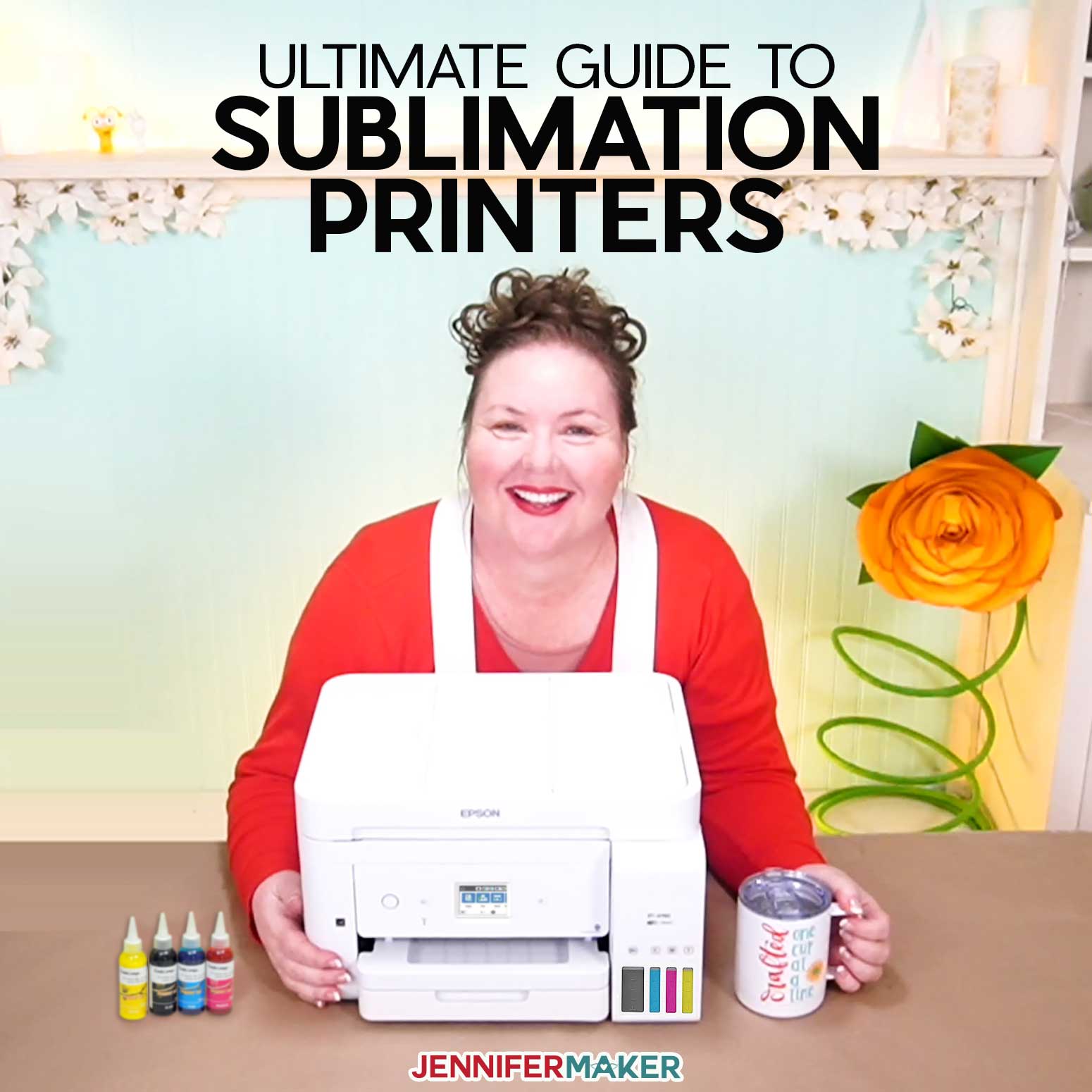To choose the best large format printer, consider your printing needs and budget before comparing features, print quality, and reliability of various models. A large format printer can handle wide-format printing and is suitable for businesses, graphic designers, photographers, and architects.
The size and type of materials it can print on, such as paper or vinyl, are important factors to consider. Additionally, evaluate the printer’s print speed, resolution, connectivity options, and compatibility with your existing software and operating system. Taking into account customer reviews and seeking recommendations from professionals in your industry can also aid in making an informed decision.

Credit: jennifermaker.com
Factors To Consider When Choosing A Large Format Printer
When it comes to choosing the best large format printer, there are several factors that you need to consider. From your printing requirements to the print quality, printer size and capacity, and connectivity options, each aspect plays a crucial role in ensuring that you make the right decision. In this blog post, we will delve into each of these factors in detail to help you choose the best large format printer for your needs.
Printing Requirements
One of the first things you need to consider when selecting a large format printer is your printing requirements. Ask yourself what kind of materials you will be printing and in what quantities. This will determine the type of printer technology you should opt for. If you need to print high-resolution images with vivid colors, a printer with advanced inkjet technology may be the right choice. On the other hand, if you primarily need to print text or line drawings, a laser printer may be more appropriate. Understanding your printing requirements will help you narrow down your choices and find the best printer for your specific needs.
Print Quality
The print quality is another crucial factor to consider when choosing a large format printer. You want your prints to be sharp, accurate, and vibrant, regardless of the size. Look for a printer that offers high-resolution output, as this will ensure that your prints have crisp details and colors that pop. Additionally, pay attention to the color gamut or the range of colors the printer can reproduce. A printer with a wider color gamut will allow you to accurately reproduce a broader range of hues, resulting in more accurate and true-to-life prints.
Printer Size And Capacity
The size and capacity of the printer are important factors to consider, especially if you have limited space or require high-volume printing. Large format printers come in various sizes, so make sure to measure the available space in your office or workspace before making a decision. Consider the dimensions and weight of the printer to ensure that it can fit comfortably and be easily maneuvered. Additionally, assess the printer’s capacity in terms of paper handling and ink cartridges. If you anticipate printing large quantities or working on projects that involve multiple paper sizes, look for a printer that can accommodate your needs without frequent downtime for reloading paper or changing cartridges.
Connectivity Options
Finally, consider the connectivity options that the large format printer offers. In today’s digital age, seamless integration with your existing workflow is essential. Look for a printer that provides a variety of connectivity options, such as USB, Ethernet, or wireless connectivity. This will allow you to easily connect and print from various devices, including computers, laptops, smartphones, and tablets. Additionally, some printers offer cloud printing capabilities, enabling you to print directly from your cloud storage services or mobile apps. Choosing a printer with versatile connectivity options will ensure that you can efficiently and conveniently print from your preferred devices with ease.
Types Of Large Format Printers
When it comes to choosing the best large format printer for your needs, understanding the different types of printers available is crucial. Each type of printer has its own set of advantages and limitations, so it’s important to consider your specific requirements before making a decision. In this article, we’ll explore the three main types of large format printers: inkjet printers, laser printers, and dye sublimation printers.
Inkjet Printers
Inkjet printers are among the most popular options for large format printing due to their versatility and print quality. These printers use tiny droplets of ink to create precise and vibrant prints. With advances in technology, inkjet printers can produce high-resolution prints that are ideal for art reproductions, photography, and graphic design projects.
Inkjet printers are suitable for a wide range of surfaces, including paper, canvas, fabric, and even certain types of wood. They offer a wide color gamut, allowing for accurate color reproduction. Additionally, they are typically more affordable than other types of large format printers, making them a popular choice for small businesses, artists, and photographers on a budget.
Laser Printers
Laser printers are known for their speed and efficiency in producing large format prints. Unlike inkjet printers that use liquid ink, laser printers use toner and heat to transfer the image onto the printing material. This results in sharp and precise prints, perfect for engineering drawings, architectural plans, and CAD designs.
One of the key advantages of laser printers is their ability to print on a wide range of materials, including various types of paper, cardstock, and transparencies. Laser printers are also ideal for printing text-heavy documents or black and white prints with crisp details.
Dye Sublimation Printers
Dye sublimation printers are the go-to option for professionals looking to create high-quality photographic prints and graphics. These printers use a heat transfer process that directly converts dye into a gas, which then bonds with the printing material to create vibrant and long-lasting prints.
Dye sublimation printers produce prints with exceptional color accuracy, detail, and fade resistance. They are commonly used in the production of large format prints for advertising, signage, textiles, and personalized items like mugs and t-shirts.
Dye sublimation printers are best suited for printing on specific materials specially coated to receive the dye, such as polyester fabrics or specialized transfer papers. They are popular in industries like fashion, interior design, and promotional products.
Best Large Format Printers In The Market
When it comes to large format printing, choosing the best printer for your needs is crucial. Whether you’re a professional graphic designer, photographer, or small business owner, having a reliable large format printer can make a world of difference in the quality and speed of your prints. In this article, we will be discussing some of the best large format printers in the market, their pros, and cons, to help you make an informed decision.
Printer A: Pros And Cons
Printer A is a popular choice among professionals due to its outstanding print quality and versatility. With its high-resolution capabilities and wide color gamut, it is perfect for printing photographs, fine art, and detailed graphics. One of the standout features of Printer A is its ability to print on various media types, including canvas, vinyl, and glossy paper, allowing you to explore different creative possibilities.
Pros:
- Outstanding print quality
- Versatile and suitable for different media types
- Wide color gamut for vibrant and accurate colors
- High-resolution capabilities for sharp and detailed prints
Cons:
- Relatively higher price point compared to other models
- Bulky and requires ample space for installation
- May consume more ink due to its high-resolution capabilities
- Can be complex to set up and operate for beginners
Printer B: Pros And Cons
If speed and efficiency are your top priorities, Printer B is a fantastic choice. This printer is known for its impressive printing speed, allowing you to complete large printing tasks in a fraction of the time. With its advanced technology, Printer B also excels in producing sharp and accurate prints, especially in black and white. Additionally, it offers seamless connectivity options, enabling you to print wirelessly from your devices.
Pros:
- High printing speed for quick completion of large printing tasks
- Produces sharp and accurate prints, especially black and white
- Seamless connectivity for wireless printing
- Option to print from various devices
Cons:
- May compromise on color accuracy and vibrancy compared to other models
- Limited media compatibility
- Relatively louder operation during printing
- Setup and software installation can be time-consuming
Printer C: Pros And Cons
If you’re looking for a cost-effective option without compromising on quality, Printer C is worth considering. It offers a great balance between affordability and print performance. With its user-friendly interface, Printer C is suitable for beginners and professionals alike. This printer also boasts excellent color accuracy and a reliable printing system, ensuring consistent and crisp output.
Pros:
- Affordable option without compromising on print quality
- User-friendly interface for easy operation
- Excellent color accuracy
- Reliable printing system for consistent and crisp output
Cons:
- Slower printing speed compared to some higher-end models
- May have limitations in terms of maximum print size
- Less advanced features and options
- Higher running costs due to ink consumption

Credit: all3dp.com

Credit: medium.com
Frequently Asked Questions For How To Choose Best Large Format Printer
What Is The Best Format For Large Format Printing?
For large format printing, the best format to use is PDF. This format ensures high-quality, sharp images and text when printed on larger materials. PDF files are also compatible with most printers and can be easily shared and viewed on different devices and operating systems.
What Resolution Should I Use For Large Prints?
For large prints, it is recommended to use a resolution of at least 300 DPI (dots per inch). This ensures high quality and sharpness, allowing for clear and detailed images. Higher resolutions may be needed for larger sizes or if viewing distance is closer.
Which Type Of Printer Is Most Suitable For Large Volume Printing?
The most suitable printer for large volume printing is a production printer that can handle high-speed and high-capacity printing tasks efficiently.
What Is The Difference Between Wide Format And Large Format Printers?
Wide format printers and large format printers are essentially the same thing. They are capable of printing on larger paper sizes, typically those exceeding the standard printing dimensions. These printers are commonly used for producing signage, banners, posters, and other large-scale graphics.
Conclusion
Choosing the best large format printer doesn’t have to be a daunting task. By considering your specific needs, such as print size and quality, as well as budget constraints, you can make an informed decision. Remember to research different brands and models, read customer reviews, and compare features.
With the right large format printer, you can unleash your creativity and bring your designs to life. Happy printing!
